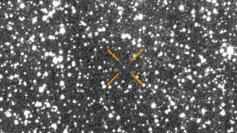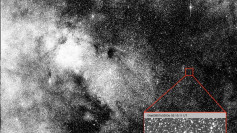Astronomers around the world are tracking an interstellar object, 3I/Atlas, that has defied scientific expectations with an unusually fast-growing tail and a mysterious radio signal detected from its vicinity. The cosmic traveler, now nearing its closest approach to Earth, is being closely studied by observatories across three continents as scientists struggle to explain its unpredictable behavior.
High-resolution imagery from both the Hubble Space Telescope and NASA's James Webb Space Telescope shows that 3I/Atlas's tail has lengthened dramatically in recent weeks, expanding far beyond initial projections. The luminous stream of dust and gas, which continues to intensify, indicates volatile materials escaping at rates rarely seen in comets within the Solar System.
Researchers say the object's erratic reaction to sunlight is one of its most confounding traits. Unlike ordinary comets whose tails evolve in a steady, predictable manner, 3I/Atlas appears to flare and dim abruptly. Some teams have proposed that its surface contains metallic or crystalline compounds that interact differently with solar radiation, while others point to structural degradation accumulated over its long interstellar journey.
Adding to the intrigue, multiple radio observatories have detected an anomalous signal linked to 3I/Atlas. The signal, first recorded in early November, has a repeating frequency pattern that does not correspond to known natural emissions such as solar wind turbulence or background cosmic noise. While experts caution against speculative explanations, the data has intensified interest in the object's electromagnetic activity.
Research teams in North America, Europe, and East Asia are now independently verifying the radio detections. Early results indicate that the signal may originate from charged particles interacting with the object's magnetic field or from resonance effects as it moves through fluctuating plasma densities in the solar environment. The precise cause, however, remains undetermined.
NASA and other space agencies have confirmed that 3I/Atlas poses no threat of impact and will reach its closest point to Earth later this month. The event will allow researchers to gather high-resolution spectral data to study its chemical makeup and refine models of how such objects travel across interstellar space.
Astronomers have compared 3I/Atlas to earlier interstellar objects like ʻOumuamua and 2I/Borisov, but the object's unstable tail, shifting brightness, and enigmatic radio output set it apart as one of the most puzzling celestial phenomena in recent years. Its study, experts say, could help scientists better understand how matter is exchanged between distant star systems - and just how diverse the building blocks of planetary systems can be.




